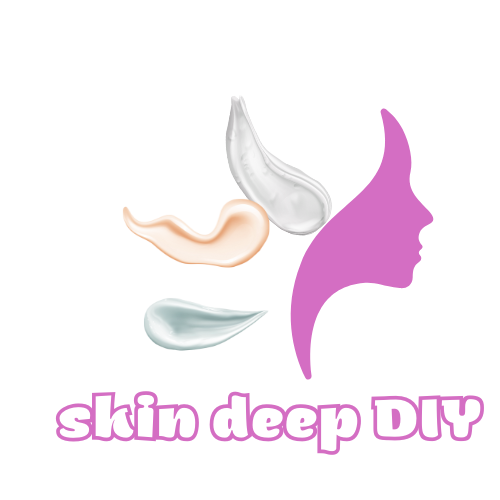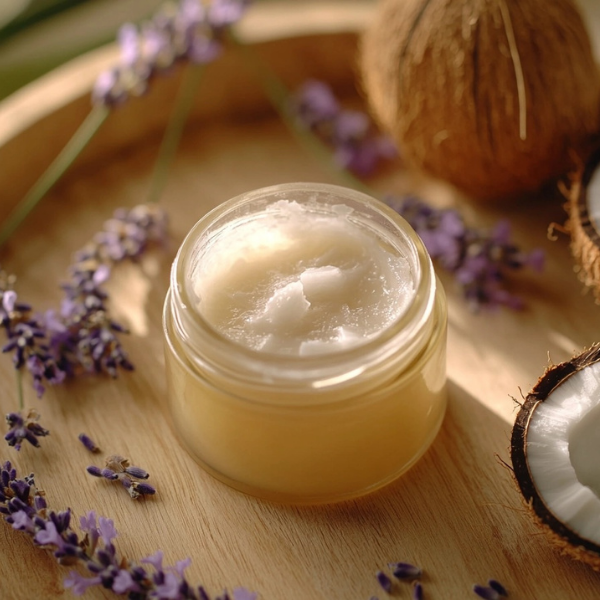Soothe and restore peeling sunburned skin with this DIY coconut oil balm—use only after heat subsides. Optional aloe and lavender for extra calm.
Introduction – Purpose of the product + hook
Coconut oil is often praised for its hydrating powers, but when it comes to sunburns, timing is everything. Applying it too soon can trap heat and delay healing. This DIY coconut oil balm is specially crafted for the recovery phase—perfect for easing peeling skin and restoring moisture once the initial redness has faded. With calming lavender and soothing aloe, it’s your post-sun skin’s best friend.
Benefits of This DIY Product – 4–6 skin benefits
- Deeply moisturizes dry, flaking skin
- Aids in skin barrier repair after sunburn
- Soothes peeling and tightness
- Lavender oil calms and reduces irritation
- Optional aloe adds post-burn relief
- Non-toxic and safe for sensitive skin
Ingredients Overview – Bullet list with brief purposes
- Organic virgin coconut oil – Hydrates and supports skin healing
- Aloe vera gel (optional) – Adds a soothing, cooling element
- Lavender essential oil (optional) – Provides calming, anti-inflammatory effects
Instructions – Step-by-step, including tools
- Gently melt 1/4 cup coconut oil in a small bowl using a double boiler or microwave until just liquefied.
- If using aloe vera gel, whisk it in slowly to prevent separation.
- Add 5 drops lavender essential oil and stir to blend.
- Let the mixture cool slightly, then pour into a clean jar or tin.
- Let it solidify at room temperature, or place in the refrigerator for a firmer consistency.
- Apply only after the sunburn’s heat and redness have subsided (typically after 48–72 hours).
How to Use It – Frequency, amount, skin type, patch test tips
- Use sparingly on peeling or dry sunburned areas 2–3 times daily during recovery.
- Apply a small amount, gently massaging into clean, dry skin.
- Ideal for dry or combination skin types.
- Avoid use on raw, freshly burned skin; wait until inflammation calms.
- Patch test recommended, especially when using essential oils.
Storage & Shelf Life – Storage tips + expiration
- Store in a cool, dry place in a sealed container.
- Use within 2–3 months.
- Refrigeration extends shelf life and offers a cooling effect when applied.
Customization Tips – Variations for oily/dry/sensitive skin
- For oily skin: Reduce coconut oil and use more aloe vera.
- For dry skin: Add 1 tsp of shea butter for richer hydration.
- For sensitive skin: Skip essential oils and stick with coconut oil and aloe only.
Common Mistakes to Avoid – 3–5 points
- Applying too early when skin is still inflamed and hot.
- Using unsterilized containers, risking contamination.
- Skipping the patch test, especially with essential oils.
- Over-applying, which can clog pores on sensitive skin.
- Letting water get into the balm, which can cause spoilage.
FAQs – At least 5 common questions and helpful answers
1. Why can’t I use coconut oil right after sunburn?
Because it can trap heat in the skin, delaying the cooling process and increasing inflammation.
2. When is the best time to apply this balm?
Wait 48–72 hours after sunburn, once the redness and heat have mostly resolved.
3. Can I use it on my face?
Yes, but only if your skin tolerates coconut oil and essential oils. Do a patch test first.
4. How long does this balm last?
It lasts 2–3 months if stored properly in a clean, sealed container.
5. What if the balm separates?
That can happen if aloe is added. Stir before use or refrigerate to re-solidify.
Conclusion – Recap + encouragement + CTA (share, pin, tag, etc.)
Your skin deserves the gentlest care after sun exposure, and this coconut oil balm delivers just that—nourishment, hydration, and soothing comfort, all at the right time. Keep this recovery balm on hand for those post-beach days, and don’t forget to share your sun-safe journey on Pinterest or Instagram with #coconutoilbalm and #afterburncare!

